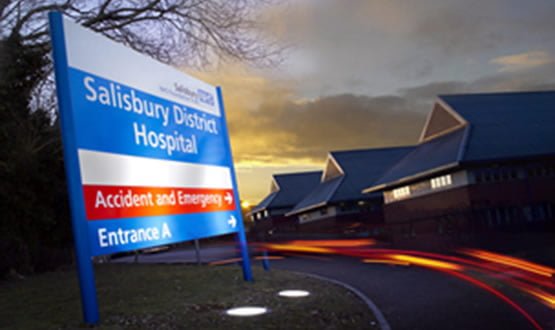Salisbury NHS Foundation Trust is virtualising its entire infrastructure with ANS’ Infrastructure 3.0 architecture.
The virtualisation contract is worth more than £1m and is tipped to help the trust avoid costs of £3.5m and make savings of £1.5m over the next five years.
The trust’s head of informatics, Peter Gill, said much of the trust’s current infrastructure is old and inefficient.
“[The trust] has 190 physical IT servers which are housed in seven computer rooms on site. Of these, servers 30 are no longer supported due to their age and the remaining servers will have to be replaced during the next five years.”
The trust’s business case for the project adds that of the seven computer rooms, one – the endoscopy computer room – is not even purpose built, and is “a converted rest room.”
Three of the other computer rooms are at full capacity, while the other three have only limited expansion space. Virtualisation will create more space, although this will not in itself reduce costs.
The trust expects to save money by reducing its power and cooling costs and reducing the cost of future hardware and maintenance; which it expects to fall by £50,000 in the first year.
The trust used Amicus ITS to make the case for the virtualisation project. ANS’ Infrastructure 3.0 architecture will include a storage area network, a Cisco Blade farm to house the virtual servers, and the conversion of data to the virtual servers.
The trust will also be deploying Cisco’s Unified Computing System, NetApp unified storage, and VMware virtualisation technology.
Gill said the virtualisation will improve the resilience of the network and performance for users as well as cutting costs, power usage and carbon footprint.
The business case states that for every 50 servers virtualised there is a reduction in carbon footprint equivalent to 900 tons of carbon dioxide over three years.
ANS has been working with the trust over the past year to upgrade its network and is now moving onto a second phase, which includes virtualisation.
Andy Barrow, technical director of ANS Group, said Infrastructure 3.0 architecture has proven to have significant reductions.
“It really cuts down the amount of resources needed. It cuts a third of the power, a quarter of cooling and it’s a lot more secure. It’s a lot easier to manage and a lot more robust.”
He said it would also provide the trust with improved disaster recovery as it allows a full system restoration to take place in 15 minutes should there be a failure in any of its centres.
The virtualisation is expected to be completed by Autumn 2012. Barrow said those involved are taking a cautious approach to going live with the new infrastructure.
“What takes the time is phasing off the old into the new…it takes a lot of time to plan that and make sure it’s made at the best time of day making sure we’re giving everybody in the hospital enough time.”
ANS claims to have systems in place at 50-60% of NHS trusts.

